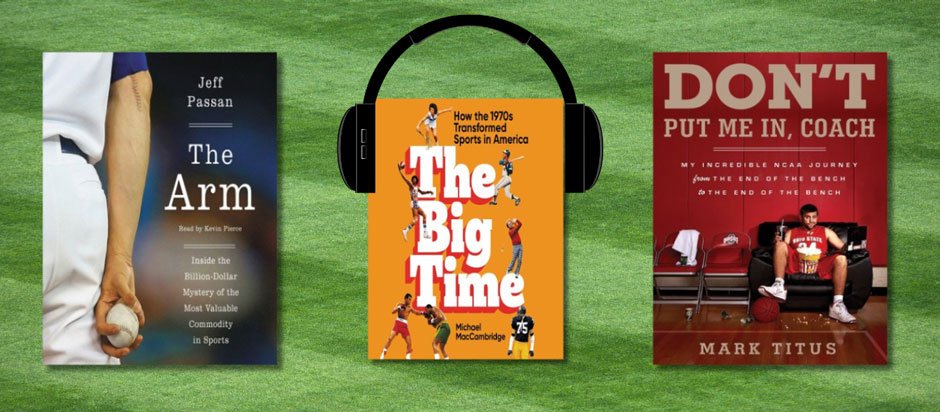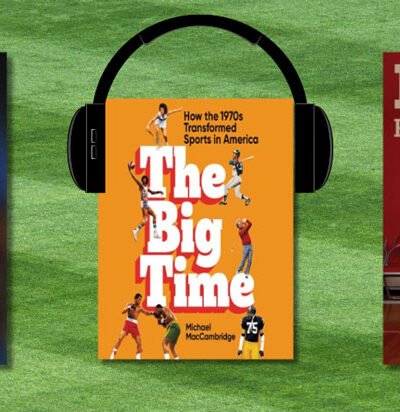 Do you find cooking a bit dull? Maybe it’s time to turn up the tunes and transform that kitchen routine into a fun dance party. Audiobooks and podcasts work well in kitchens because they entertain without demanding much attention. They keep your mind engaged while your hands handle the cooking. Want fresh ideas for your next kitchen jam session? Let’s explore some great cooking podcasts and audiobooks that set the mood right.
Do you find cooking a bit dull? Maybe it’s time to turn up the tunes and transform that kitchen routine into a fun dance party. Audiobooks and podcasts work well in kitchens because they entertain without demanding much attention. They keep your mind engaged while your hands handle the cooking. Want fresh ideas for your next kitchen jam session? Let’s explore some great cooking podcasts and audiobooks that set the mood right.
Why music & audio matter in the kitchen
Music and audio can change cooking from a chore to a joy. With the right soundtrack, the kitchen becomes a place of fun. Let’s look at why this matters:
- Mood booster. Music and stories add cheer while you cook. They lighten up your mood and make the cooking process more enjoyable. A lively beat or a nice story can change how you feel and bring positivity.
- Stress relief. Cooking sometimes causes stress, especially after a busy day. Music or a relaxing podcast helps ease tension when you start to feel overwhelmed. This simple addition brings calmness to the room.
- Multi-tasking. When your hands are busy, your mind wants something else to do. Audiobooks and podcasts fill that gap without needing much attention. They let you focus on tasks while enjoying interesting stories or tunes.
- Family fun. Listening to a well-loved audiobook or catchy song makes cooking together more special. It brings laughter and joy as everyone shares in the experience. Children join in with more interest when there’s an appealing soundtrack.
- Creative boost. Music and audio encourage creativity in the kitchen. A catchy tune or intriguing podcast can spark new ideas for dishes. When the atmosphere is lively, you might experiment more with recipes and ingredients, which can lead to interesting results.
4 Best podcasts for cooking
Cooking can seem less of a task and more of a treat with the right podcast. While you chop or stir, fun voices and stories fill the room. Here’s a look at some of the best food podcasts to jazz up your cooking time.
1. Gastropod
Hosted by Cynthia Graber and Nicola Twilley, Gastropod dives into the history and science of food. They explore why certain foods exist and their impact on society throughout time. The hosts research their topics thoroughly, using expert interviews and field trips. Topics range from microbes in sourdough to sugar’s political past. This podcast fits those curious about the deeper story behind what they eat.
2. Table Manners
Jessie Ware and her mom, Lennie, share lively talks with celebrity guests at their dining table. The warm, funny chats include food preferences, childhood meals, and cultural differences. Lennie’s candid remarks pair well with Jessie’s humor, creating a feel-good vibe. Family traditions and personal dish stories make each episode relatable and heartfelt. It’s all about joy around the table rather than mastering cooking techniques.
3. Dinner SOS
Chris Morocco from Bon Appétit solves real-life cooking problems sent in by listeners. Whether dealing with too much salt or wilted veggies, Chris offers practical advice. He simplifies complex techniques for home cooks of all skill levels. This show helps anyone aiming to cook confidently and adapt well to mishaps.
4. The Sporkful
Dan Pashman explores the world of food with curiosity and humor. He examines the details of food, such as how to build the best sandwich or the design of utensils. Through interviews with chefs and food lovers, he uncovers interesting stories about eating habits and culture. The podcast is playful, often featuring unusual food combinations and thoughtful debates on food topics. It’s a choice for those who enjoy a different look at the eating experience.
5. Home Cooking
Samin Nosrat and Hrishikesh Hirway aim to help home cooks find comfort in their kitchens. Samin shares her love and knowledge of cooking, while Hrishikesh asks smart questions. They offer helpful tips and recipes and answer listener queries with warmth and humor. This podcast feels like a friendly chat with people who love good food.
4 Best audiobooks to cook
Audiobooks can fill your kitchen with stories or music that match your cooking vibe. Whether you want to dive into a gripping tale or enjoy a fun story, audiobooks help keep the kitchen lively. Let’s look at some top picks for your next cook-up session.
1. Kitchen Confidential by Anthony Bourdain
In this audiobook, Anthony Bourdain shares tales from his life in restaurant kitchens. He talks about the high-pressure atmosphere and the wild side of chef life. His stories paint a picture of what really happens behind the kitchen doors, from intense prep shifts to late-night meals. You hear about colorful characters and unforgettable experiences that shaped his career as a chef. This audiobook adds some spice and drama to your kitchen routine.
2. Salt, Fat, Acid, Heat by Samin Nosrat
Samin Nosrat simplifies cooking with clear explanations of key elements: salt, fat, acid, and heat. She shares how these four elements influence cooking and flavors, making your dishes more delicious. As you listen, you get practical tips and gather inspiration to experiment in the kitchen. This audiobook inspires confidence to tackle recipes using just a basic understanding of these concepts.
3. Eat a Peach by David Chang
David Chang’s book offers a candid look at his life in the food industry. He speaks openly about his mental health challenges and ambitions. David’s honest narration reveals both his victories and tough times in building his restaurant empire. Through personal stories, he also comments on changes in food culture today. It’s a relatable story that shows both the highs and lows of chasing dreams.
4. Relish by Lucy Knisley
This audiobook from Lucy Knisley brings to life her love for food through personal tales. She recalls childhood meals, special recipes, and tasty adventures from later years. Each section feels like sharing a joyful memory around the table with family or friends listening intently. The mood is lighthearted yet full of warmth as she speaks about her experiences. Her friendly tone makes you feel like you’re cooking alongside a friend sharing delightful stories.
How to create the perfect kitchen dance party atmosphere
You can transform your cooking time into a fun dance party with the right setup. Here’s how you can do it:
- Best genres and playlists for cooking. Choose music that lifts your mood and suits your taste. Funk, pop, or upbeat jazz keep energy high while you mix or fry. Curate a playlist that lasts as long as your cooking session to keep the vibe going.
- Choose between audiobooks and podcasts. If you prefer stories and like to dive into characters, go for audiobooks. They work well when you have more time. Podcasts offer short bursts of entertainment and suit quick meals with their easy-to-follow themes. To learn more about cooking in your free time, you can also choose between audiobooks or readingphysical books.
- Speaker placement and sound quality. Place your speakers at ear level for the best sound. Make sure they’re safe from spills or splatters. A small speaker on a shelf fills the room with rich audio without taking up counter space.
- Lighting and ambiance. Adjust lights to match the mood. Soft, warm lights create a cozy feel, while brighter lights help when chopping or mixing. Candles or string lights add a touch of magic to evening cooking sessions.
Turn your kitchen into a dance party
To make the meal preparation fun, you can spice up cooking with music, audiobooks, and podcasts. There are different options that can make you smile – maybe it’s a story while cooking or a catchy song while chopping. So, enjoy the company of voices and tunes while you cook, and see how they change your time in the kitchen.
100% – https://copywritely.com/tools/copywritely/task_sharing/17bfec9





Leave a Reply